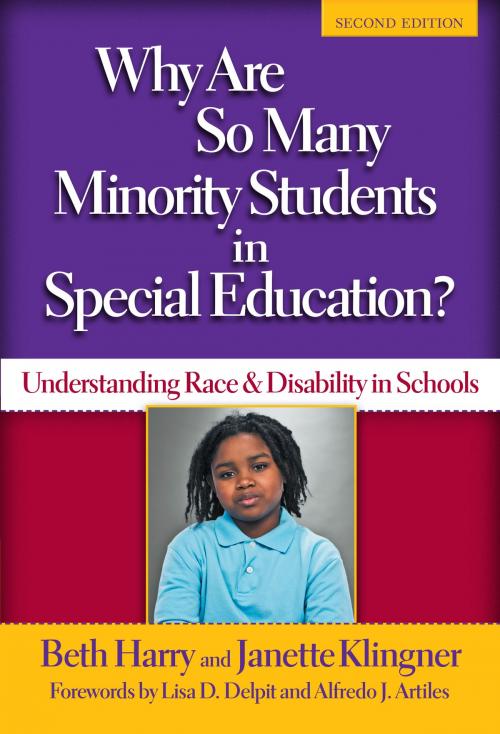Why Are So Many Minority Students in Special Education?, 2nd Edition
Nonfiction, Reference & Language, Education & Teaching, Educational Theory, Multicultural Education, Special Education| Author: | Beth Harry, Janette Klingner | ISBN: | 9780807772928 |
| Publisher: | Teachers College Press | Publication: | December 15, 2009 |
| Imprint: | Language: | English |
| Author: | Beth Harry, Janette Klingner |
| ISBN: | 9780807772928 |
| Publisher: | Teachers College Press |
| Publication: | December 15, 2009 |
| Imprint: | |
| Language: | English |
The second edition of this powerful book examines the disproportionate placement of Black and Hispanic students in special education. The authors present compelling, research-based stories representing the range of experiences faced by culturally and linguistically diverse students who fall in the liminal shadow of perceived disability. They examine the children’s experiences, their families’ interactions with school personnel, the teachers’ and schools’ estimation of the children and their families, and the school climate that influences decisions about referrals to special education. Based on the authors’ 4 years of ethnographic research in a large, culturally diverse school district, the book concludes with recommendations for improving educational practice, teacher training, and policy renewal.
The expanded second edition retains all of the vividly described cases of the original research and brings additional insight to the issue of disproportionality by:
- Reframing the policy context to address key developments in the placement process, with a particular focus on Response to Intervention.
- Including a new appendix that describes and reflects on the challenges, strengths, and dilemmas of the research methodology of the study.
- Updating the figures and literature on disproportionality.
“Harry and Klingner challenge us to rethink our society’s equity commitments and to offer educational opportunities to students with ability and racial differences. . . . Their work makes a substantial contribution to a new generation of equity research concerned with the complexities of 21st-century education in pluricultural societies.”
—From the Foreword by Alfredo J. Artiles, Arizona State University
“This book provides a thorough and detailed description of the multiple factors that combine to provide inequitable educational opportunities for minority students living in poverty . . . the authors do not shy away from discussion of racism on the individual and institutional levels . . . they engage in this discussion in a refreshingly detailed and nuanced way.”
—TC Record (first edition)
The second edition of this powerful book examines the disproportionate placement of Black and Hispanic students in special education. The authors present compelling, research-based stories representing the range of experiences faced by culturally and linguistically diverse students who fall in the liminal shadow of perceived disability. They examine the children’s experiences, their families’ interactions with school personnel, the teachers’ and schools’ estimation of the children and their families, and the school climate that influences decisions about referrals to special education. Based on the authors’ 4 years of ethnographic research in a large, culturally diverse school district, the book concludes with recommendations for improving educational practice, teacher training, and policy renewal.
The expanded second edition retains all of the vividly described cases of the original research and brings additional insight to the issue of disproportionality by:
- Reframing the policy context to address key developments in the placement process, with a particular focus on Response to Intervention.
- Including a new appendix that describes and reflects on the challenges, strengths, and dilemmas of the research methodology of the study.
- Updating the figures and literature on disproportionality.
“Harry and Klingner challenge us to rethink our society’s equity commitments and to offer educational opportunities to students with ability and racial differences. . . . Their work makes a substantial contribution to a new generation of equity research concerned with the complexities of 21st-century education in pluricultural societies.”
—From the Foreword by Alfredo J. Artiles, Arizona State University
“This book provides a thorough and detailed description of the multiple factors that combine to provide inequitable educational opportunities for minority students living in poverty . . . the authors do not shy away from discussion of racism on the individual and institutional levels . . . they engage in this discussion in a refreshingly detailed and nuanced way.”
—TC Record (first edition)















